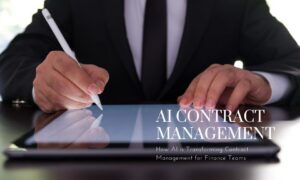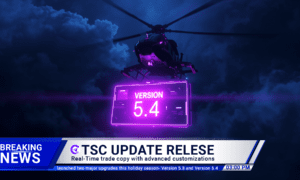Across regulated industries, from pharmaceuticals and healthcare to high tech manufacturing, contracting has moved from back office task to strategic capability. Yet many enterprises rely on fragmented templates, email approvals, and manual uploads to disparate systems, creating delay, data errors, audit risk, and revenue leakage. Technology leader Salman Sameer has delivered a Contract Management Life Cycle transformation that standardizes templates, digitizes workflows, enforces SOX grade controls, and unifies Conga CPQ, PowerApps, Model N Revenue Suite, and UiPath into a single, auditable operating model. The outcome is faster cycle times, higher accuracy, and stronger compliance at enterprise scale.
From Fragmented Packets to a Digital Flow:
The traditional contract data packet model traps analysts in low value work: extracting terms from PDFs, populating spreadsheets, emailing peer reviews, hand keying data into Model N, and reconciling discrepancies manually. Sameer’s framework replaces this with structured digital flow. Contract terms originate in Conga CPQ, flow into PowerApps as governed CDPs, pass automated validation and peer review, route via UiPath for system uploads, and reconcile in Model N Revenue Suite. Every step is logged in a tamper evident audit trail. Organizations report shorter cycle times, higher data fidelity, and more capacity without adding headcount.
Why This Approach Works:
- Standardized, dynamic templates: PowerApps provides role aware, jurisdiction specific templates with required fields, controlled vocabularies, and inline logic, normalizing inputs and improving first time right submissions.
- Rules based validation: Embedded checks catch missing terms, date overlaps, rebate conflicts, and mapping errors before upload. Workflow driven peer review replaces email chains with timestamped approvals and clear service levels.
- Seamless integration: UiPath orchestrates uploads to Model N and generates schema compliant XML, removing rekeying and template mismatches. A reconciliation engine flags deviations for fast remediation.
- Audit ready governance: SOX aligned controls including post approval field lockouts, digital signatures, immutable logs, and version control create continuous evidence trails.
- Real time visibility: Power BI dashboards expose CDP status, reviewer service levels, upload success rates, and exception patterns so leaders can manage throughput and compliance proactively.
Quantified Business Impact:
Enterprises report reduced end to end CDP processing time, material decreases in manual rework, and higher data accuracy at scale. Analysts shift time to value add analysis. Finance and compliance teams gain reliable evidence that accelerates quarter end close and reduces audit findings. Commercial leaders see fewer billing disputes and more predictable activation timelines, strengthening revenue realization.
Engineering the Stack:
- Conga CPQ: Contract terms captured in structured, template governed form with metadata preserved for downstream systems.
- PowerApps: Mandatory fields, validations, and conditional logic produce clean inputs that minimize friction.
- UiPath: Bots move validated data into Model N, verify uploads, retry failures, and log actions for rapid triage.
- Model N Revenue Suite: Automated uploads, schema compliant XML, and rules based reconciliation align executed pricing and rebates with approved terms.
- Dashboards: KPIs track cycle time, exception rates, upload accuracy, and reviewer adherence to enable data driven optimization.
Compliance by Design:
Spreadsheet centric workflows often lack version control, traceability, and segregation of duties. Sameer’s approach embeds guardrails at each stage, including template standardization, role based access, auditable approvals, immutable logs, and reconciliation checkpoints. The result is lower exposure to SOX scrutiny and a repeatable evidentiary package for audit and due diligence.
A Playbook for Global Operations:
Multinational organizations face diverse rules including price caps, transparency directives, unique tax and rebate constructs, and varied documentation norms. Sameer’s architecture supports regional logic through configurable templates while preserving centralized governance. The balance keeps contracts compliant in Spain and Italy as readily as in the United States and India.
Human in the Loop:
Automation handles repeatable steps. Human expertise remains essential for complex exceptions such as nuanced term reconciliation, cross system conflicts, or legal interpretations. Escalation paths and clear service levels ensure judgment calls are timely and traceable.
Future Proofing:
The design is extensible. AI and ML can augment term extraction, risk scoring, and clause recommendations. NLP can surface non standard commitments. Expanded APIs can propagate approved terms to CPQ, ERP, and CRM for coherent alignment.
Industry Significance:
Poor contract management erodes value through slow cycles, misconfigured pricing, noncompliance, and leakage. By delivering a modern, evidence-first CMLC, Salman Sameer shows digital contracting can be faster and safer. Activation timelines shorten, financial controls strengthen, and audit readiness improves. For leaders ready to move beyond fragmented tools, this blueprint offers a pragmatic, production tested path to scale.
For interviews or implementation insights, please contact sameer.salman@gmail.com



































